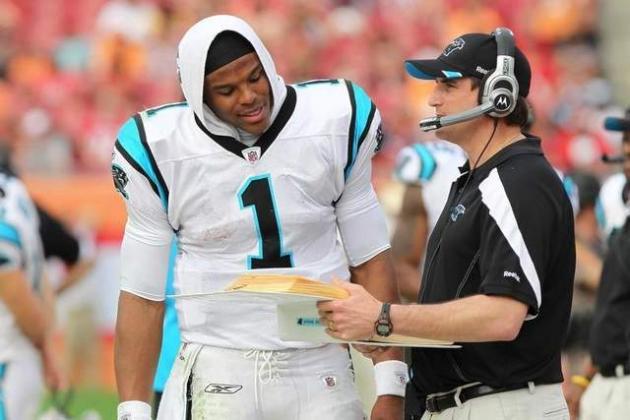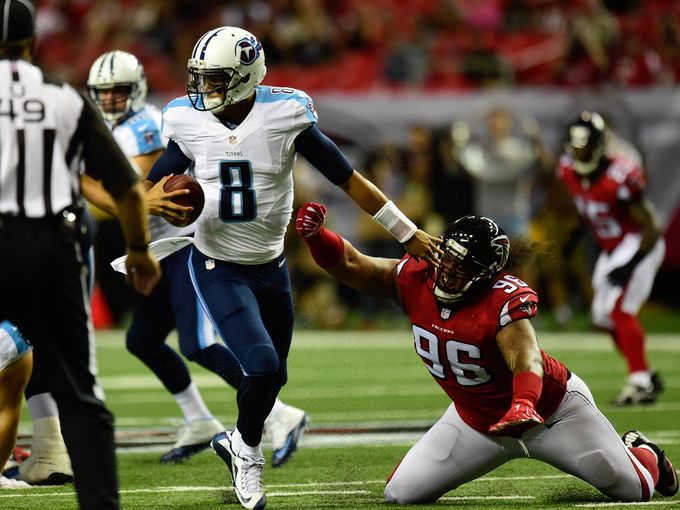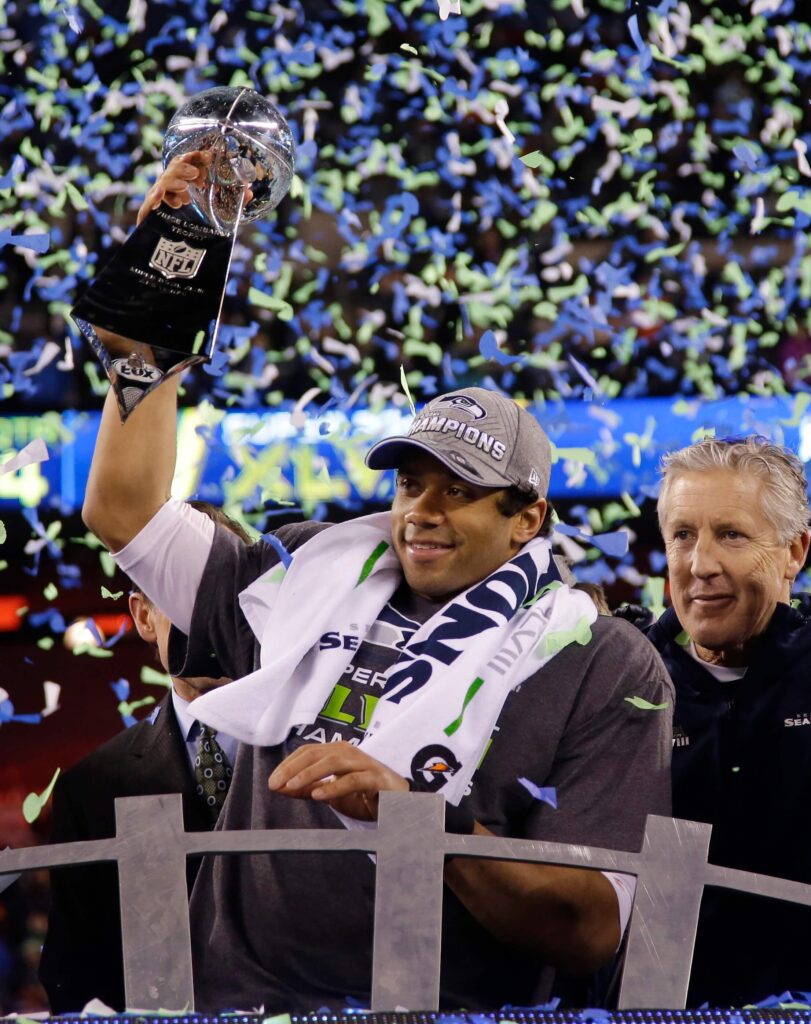Newton & Wilson prove that embracing dual schemes is nothing to fear
Cam Newton and the Carolina Panthers’ offensive approach defied conventional norms. It deviated from the expected patterns.
Earlier, the football world had glimpses of a potential revolution in offensive schemes with the early achievements of Colin Kaepernick, Robert Griffin III, and the unique, successful trajectory of Russell Wilson in his early years.
However, as the careers of Kaepernick and RGIII underwent a complete reset, Johnny Manziel faced career troubles right from the start, and Marcus Mariota transitioned into a more pocket-oriented style in his rookie year, the concept of a dual-threat quarterback remained relatively contained within the NFL.
Yet, Newton’s MVP season and the Panthers’ journey to Super Bowl 50 demonstrated the remarkable effectiveness of a dual-threat quarterback when the offense is tailored to emphasize the player’s strengths.
Offensive coaches across the league had attempted to force the traditional pocket passer mold onto players whose skills were better suited for other styles.
Newton, although exceptionally talented, managed to highlight the possibility that if some of these other quarterbacks were placed in an offense like Carolina’s, their career trajectories might not be as uncertain.

In the previous two weeks, the effectiveness of this style of offense became abundantly clear, transcending mere adequacy to achieve dominance.
The NFL’s most formidable defensive units, such as the top-ranked Seattle and eighth-ranked Arizona defenses, could not contain the Panthers. During these playoff matchups, the Panthers averaged 35 points per game.
The challenge for defenses is already substantial as they must contend with the Panthers’ potent running game and efficient passing game.
However, when you introduce a quarterback with Newton’s mobility, it’s akin to attempting to seal three leaks in a dam with just two hands.
Contemporary NFL defenses have not yet consistently adapted to account for all three dimensions effectively, which explains why the Panthers have experienced such prolific success.
Given the league’s inclination to adopt successful strategies, Newton’s achievements might pave the way for offensive coaches to embrace dual-threat schemes confidently.
Panthers’ offensive coordinator, Mike Shula, appears to have wholeheartedly embraced this approach.
Moreover, this isn’t merely a scheme he has rigidly adhered to throughout his coaching career, now imposed on Newton.
He has adeptly adjusted his offensive strategy to align with the unique strengths of his quarterback.
Why Dual-Threat Works
Preparing to face the Panthers’ offense presents a unique challenge that differs significantly from other NFL teams.
Opposing teams must strategize for a wide array of shotgun backfield formations, pre-snap motions, and unconventional scheme-based running plays, all crafted to maintain the constant threat of Newton’s mobility on every snap.
There’s a prevalent notion that Newton’s success is partly attributed to his imposing physical stature, standing at 6 feet 5 inches and weighing 245 pounds, which is believed to help him withstand the physical demands of his playing style.
This perception gained traction, especially considering the more slender build and injury concerns of Robert Griffin III.
However, this argument becomes less convincing when considering Russell Wilson, who, at 5 feet 11 inches and 206 pounds, has not missed a single game in his four-year NFL career.
Wilson’s durability, despite being a running threat, can be attributed to his exceptional ability to evade direct hits.
Consequently, you don’t necessarily need to be the most physically imposing player on the field to maintain good health as a dual-threat quarterback.
This notion is encouraging, particularly from an injury perspective, for players like Manziel, who share similar dimensions and stature.

The primary advantage of having a dual-threat quarterback is that they are typically ready to contribute immediately upon entering the league.
As demonstrated by Wilson, Newton, RGIII, and Kaepernick, they can be effective from the very start.
Wilson and RGIII guided their respective teams to the playoffs during their rookie seasons, while Kaepernick took his team to the brink of the Super Bowl in his second year.
However, two of the three experienced rapid declines in their performance.
So, why did this happen?
The prevailing discourse at the time centered on developing their skills within the pocket and encouraging a more risk-averse approach to extending their careers. In hindsight, this perspective appears misguided because, since then, it has become evident that the pocket is not necessarily a safer place for a quarterback who struggles to read defenses effectively from that position.
In the process, teams may inadvertently stifle the unique athletic abilities of the quarterback they have under center, all in the hope of fostering proficiency in a pocket-oriented style that is often taught but not fully mastered.

Allowing these dual-threat quarterbacks to operate within the schemes that align with their comfort zones provides them with valuable on-the-job training, enabling them to acquire the essential elements of a pocket passer gradually.
While practice offers an excellent environment for skill development, there’s no substitute for the experience gained from actual game situations at full speed.
Newton and Wilson, for example, have mastered the subtleties of being a pocket passer as their careers have progressed, but not in schemes that demanded them to conform to that role exclusively.
This season, Newton has demonstrated a high level of proficiency in pocket situations, perhaps more so than at any other point in his career.
Notably, this advancement didn’t result from diminishing the dual-threat aspect of his game.
On the contrary, the dual-threat dimension remains a fundamental component of his playing style. At the same time, his pocket abilities have evolved to serve as an accent, propelling him to the next level.

The real innovation that offensive coordinators should now be comfortable embracing is the implementation of dual-threat offenses that can adapt to pocket situations effectively, rather than attempting to fit dual-threat quarterbacks into traditional pocket offenses and only letting them run on occasion.
For years, dual-threat quarterbacks have been a perpetual challenge for opposing defenses.
The hesitation to fully invest in schemes tailored to such players primarily stemmed from the concern of potential injuries.
However, with Newton’s sustained success and his prominent presence on the world’s grandest stage, there’s a growing sense that this fear can be replaced by the optimism of exploring new and exciting possibilities.

